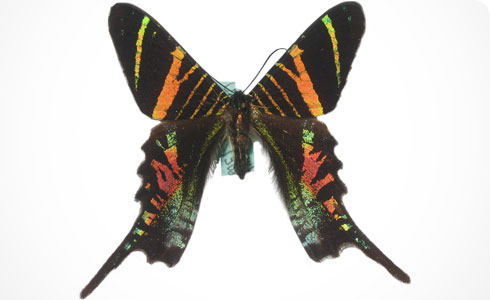Urania sloanus
Urania sloanus, an extinct Jamaican moth, is often regarded as one of the most beautiful of all moths.
Today's species honours the birthdays of the two legendary Jamaican naturalists:
- the 200th birthday of Philip Henry Gosse (6 April 1810)
- the 350th birthday of Hans Sloane (16 April 1660)
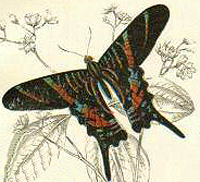
A nineteenth century painting of Urania sloanus by Kirby, 1879.
Pieter Cramer first described Urania sloanus and named it in honour of Hans Sloane. Philip Henry Gosse described the life history of Urania sloanus in vivid detail in the 1850's to 1880's.
The first illustration of Urania sloanus was probably by Hans Sloane in the second edition of Natural History of Jamaica, in 1725 (Sloane, 1725: plates 11 and 12), 54 years before its original description.
Urania sloanus became extinct within 170 years of its discovery. The causes of the extinction are a mystery but may have been due to loss of the host plant, Omphalea.
Species detail
-

Taxonomy
Read more about the form, structure and appearance of Urania sloanus at the various stages of its lifecycle.
-

Distribution
Discover the types of habitat within Jamaica that Urania sloanus lived in and details of observations of populations
-

Host plant
Urania sloanus was a herbivore of Omphalea triandra. Find out more about how the host plant of U. sloanus was discovered.
-

Conservation
Despite the moth being widely regarded as extinct, it is still undetermined how much of the hostplant Omphalea remains. Find out what probably led to the disappearance of this species.
-

Biology
Learn about the size, lifecycle and predicted life expectancy of Urania sloanus.
-

References
Get reference material for Urania sloanus.
Distribution
Distribution of Urania sloanus across Jamaica

Distribution of Urania sloanus in Jamacia during the time of Gosse. © D Lees
Images
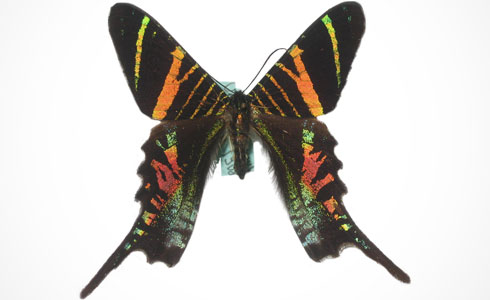
Urania sloanus an extinct Jamaican moth named in honour of Hans Sloane.
© Roberto Vinceguerra.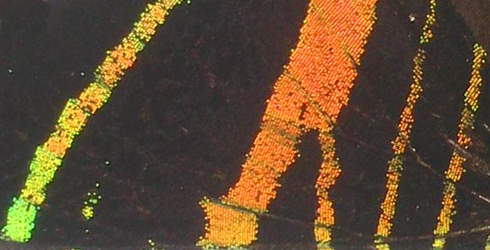
Urania sloanus wing pattern consists of metallic green blue and orange stripes on a velvet black background.
© Roberto Vinciguerra
Urania sloanus wing pattern consists of metallic green blue and orange stripes on a velvet black background
© Roberto Vinciguerra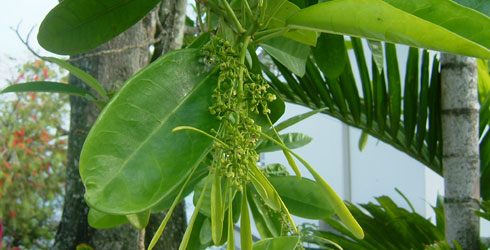
Omphalea triandra host plant of Urania sloanus still found in Jamaica today.
© Atsushi Kawakita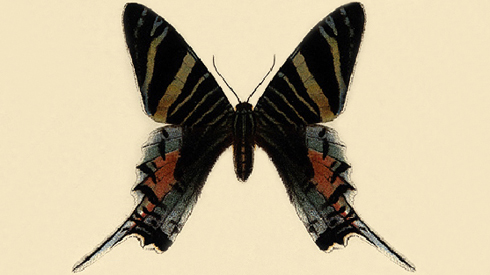
Illustration of Urania sloanus
© Seitz 1925Author

Dr David Lees
Scientific Associate,
Department of Entomology.
